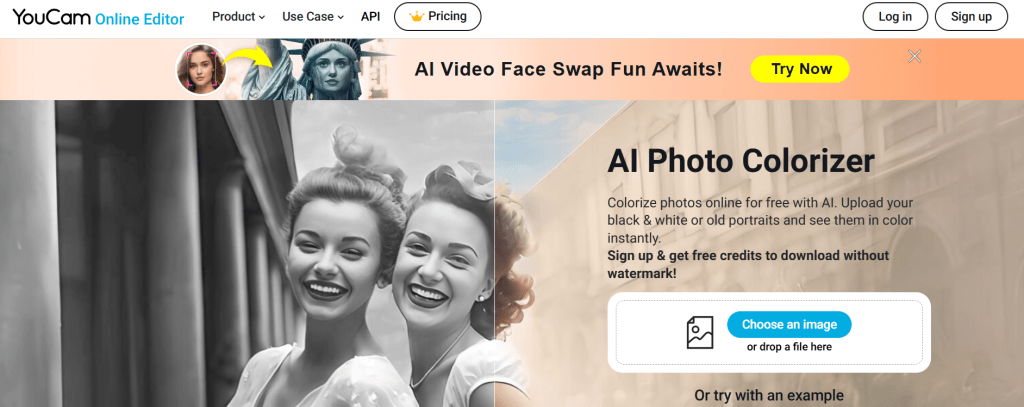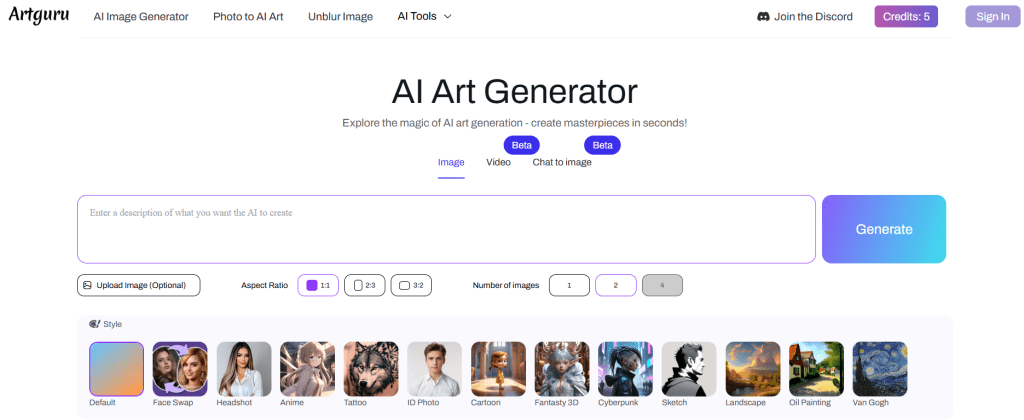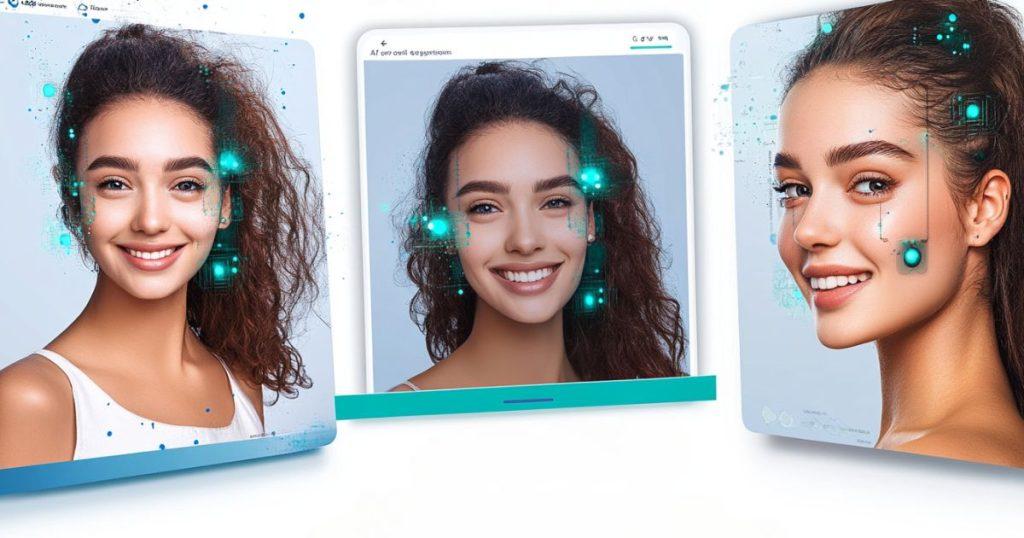In recent years, the intersection of artificial intelligence (AI) and art has captivated the imagination of both technologists and artists. AI, a field once dominated by data-driven applications, has made an unexpected foray into the realm of creativity, particularly in digital art creation. Among the most intriguing and rapidly growing trends in this space is the generation of AI-created digital women portraits AI. These digital creations are not just a testimony to the technological advancements but also a new medium for artistic expression, reshaping the way we perceive and create art.
The importance of AI-generated women portraits lies not just in their novelty but in their ability to redefine the norms of artistic creation and representation. As AI continues to evolve, it opens up a myriad of possibilities for depicting women in digital art, offering a unique lens through which we can view and understand this emerging form of creativity.
Understanding AI in Digital Art
AI Technology in Digital Art
AI in digital art primarily leverages machine learning, deep learning, and computer vision. These technologies enable computers to learn from and interpret data, mimicking human cognitive functions. In the context of art, AI algorithms analyze vast datasets of images and styles, learning to replicate and even innovate artistic techniques.
Historical Context of AI in Art Creation
The journey of AI in art creation dates back several decades, evolving from simple algorithmic compositions to complex, emotionally resonant pieces. This journey reflects the broader narrative of AI’s evolution, showcasing how technological advancements have expanded the boundaries of what machines can create.
Popular AI Portrait Generators
YouCam Perfect: Advanced Features for Creating Lifelike AI Portraits

YouCam Perfect has emerged as a frontrunner in the AI portrait generator space, known for its advanced capabilities in creating lifelike portraits of women. This platform utilizes cutting-edge AI algorithms to analyze facial features and expressions, allowing users to generate portraits that are strikingly realistic. One of the most notable features of YouCam Perfect is its ability to adjust minute details such as skin tone, facial structure, and even lighting effects, offering a high degree of customization. This level of detail ensures that each portrait is not just a generic AI creation but a unique piece of digital art.
Fotor’s AI Portrait Generator: Embracing Diversity with a Wide Range of Styles

Fotor’s AI Portrait Generator stands out for its diverse range of styles and scenes. Whether users are looking for a classic, Renaissance-inspired portrait or a modern, abstract representation, Fotor offers an extensive selection. This versatility is particularly significant in the context of creating women’s portraits, as it allows for a broader representation of femininity and beauty standards. Fotor’s AI also impresses with its ability to adapt to various artistic styles, from photorealism to impressionism, making it a favorite among both amateur and professional digital artists.
ArtGuru: Innovating with GANs for Unique Portrait Creations

ArtGuru takes a unique approach to AI-generated portraits by leveraging Generative Adversarial Networks (GANs). This technology involves two neural networks, one generating the image and the other evaluating it, leading to highly creative and sometimes unexpected results. ArtGuru’s use of GANs is particularly effective in creating women portraits that are not only visually stunning but also possess a depth of character and emotion often hard to achieve in digital art. The portraits generated by ArtGuru are characterized by their distinct style, which can range from hyper-realistic to whimsically abstract.
DeepArt: Transforming Photos into Artistic Masterpieces
DeepArt is another notable name in the world of AI portrait generators. What sets DeepArt apart is its focus on transforming existing photographs into works of art. Users can upload a photo of a woman and choose from a variety of artistic styles. The AI then reimagines the photo in the chosen style, effectively turning a simple portrait into a masterpiece reminiscent of famous artists like Van Gogh or Picasso. This ability to merge traditional photography with AI-generated art makes DeepArt a popular choice for those looking to add an artistic flair to their portraits.
PortraitAI: Classic Portraiture with a Modern Twist
PortraitAI offers a unique twist by specializing in classic portraiture. This AI generator takes modern-day images and reinterprets them in the style of historical portraits, giving users a glimpse of how they might have looked in different eras. The AI’s understanding of historical art styles and its ability to apply these styles to contemporary images make PortraitAI a fascinating tool for creating unique and personalized women portraits.
Prisma: Artistic Filters for Creative Portraits
Prisma, while primarily known for its artistic filters for photographs, also delves into AI-generated portraiture. Its AI uses an array of filters to convert photos into artwork resembling the styles of famous artists and art movements. This easy-to-use app allows users to experiment with different artistic interpretations of women’s portraits, making it an accessible option for those looking to explore AI art without needing technical expertise.
Case Studies: Digital Women Portraits AI
Exploring the Work of Digital Artists in AI Women Portraits
Digital artists have been at the forefront of exploring and pushing the boundaries of AI in creating women portraits. A notable example is the work of Crypto Tea, an artist who has gained recognition for using AI to create portraits of women from various countries and cultures. Crypto Tea’s portfolio showcases a diverse range of styles and themes, highlighting the artist’s ability to use AI not just as a tool but as a collaborator in the creative process. Each portrait reflects a deep understanding of the subject’s cultural background, blended with a unique artistic vision made possible by AI. This fusion of technology and traditional artistry presents a new paradigm in how women are represented in digital art.
Analysis of Specific AI-Generated Women Portraits
In-depth analysis of specific AI-generated women portraits reveals the intricacies and nuances that AI is capable of capturing. For instance, some portraits exhibit a remarkable level of detail in facial expressions and textures, demonstrating how AI can replicate the subtleties of human emotion and physical characteristics. Other examples showcase more abstract interpretations, where AI algorithms generate imaginative and unconventional representations of women, breaking free from traditional artistic constraints. These portraits not only challenge our perceptions of art and creativity but also open up new avenues for representing femininity and identity in digital media.
Impact and Reception in the Art Community
The reception of AI-generated women portraits in the art community has been both intriguing and polarizing. On one hand, these works are praised for their innovation and the new perspectives they bring to the portrayal of women in art. They are seen as a testament to the evolving relationship between humans and machines, and their potential to co-create. On the other hand, there are debates about the authenticity of AI-generated art, with some critics questioning the role of the artist when the creation process is heavily assisted by algorithms. Despite these differing views, it is undeniable that AI-generated women portraits have sparked a significant conversation about the future of art, the role of technology, and the evolving depiction of women in the digital age.
Notable Exhibitions and Collaborations
Several AI-generated women portraits have found their way into prestigious art exhibitions and collaborations, signifying their growing acceptance and interest in the art world. These exhibitions often highlight the intersection of technology and art, showcasing how AI can be harnessed for creative expression. Collaborations between AI artists and traditional artists are also becoming more common, offering a blend of algorithmic precision and human intuition. Such collaborations are pivotal in exploring new artistic territories and in understanding the potential of AI in redefining art.
Educational and Cultural Projects Involving AI Portraits
Educational institutions and cultural organizations have also started to incorporate AI-generated portraits in their projects and curriculums. These initiatives aim to educate the public about the capabilities and implications of AI in art, as well as to encourage a dialogue about the ethical and cultural aspects of this emerging field. By integrating AI art into educational and cultural contexts, there is an opportunity to demystify the technology and foster a broader understanding of its role in the creative industries.
Technical Aspects and Challenges
Technical Overview of How AI Generates Women Portraits
The process of generating women portraits using AI involves a complex interplay of various technologies, primarily machine learning, deep learning, and computer vision. These AI systems are trained on large datasets of images, learning to recognize and replicate patterns, textures, and styles. The training involves feeding the AI thousands of artworks or photographs, allowing it to understand different artistic elements such as color, form, and composition.
Deep learning, a subset of machine learning, is particularly crucial in this context. It uses neural networks with multiple layers (hence the term “deep”) to process data, making it adept at handling the intricacies involved in art creation. For instance, when generating a portrait, the AI analyzes existing images, understanding subtle facial features and expressions. It then applies this knowledge to create new portraits, often with a level of detail and creativity that can be comparable to human artists.
Computer vision plays a significant role in recognizing and interpreting visual information from the world. In creating AI-generated women portraits, computer vision algorithms help the system understand human faces’ nuances, ensuring that the portraits are realistic and convey the desired emotions or artistic intent.
Challenges and Limitations in AI-Generated Art
While AI has made significant strides in art creation, it faces several challenges and limitations:
- Originality and Creativity: One of the most significant challenges is ensuring that the AI-generated art is original and not merely an amalgamation of existing works. There’s a fine line between drawing inspiration and replicating existing art, which AI systems sometimes struggle to navigate.
- Data Bias: The quality and diversity of the data used to train AI systems significantly impact the output. If the training data is biased or lacks diversity, the portraits generated may perpetuate stereotypes or underrepresent certain groups.
- Emotional Depth and Understanding: Although AI can replicate styles and techniques, there is an ongoing debate about whether it can truly understand and convey the emotional depth that is often intrinsic to art, especially in portraits that are meant to capture the essence of a subject.
- Technical Limitations: AI systems, despite their advancements, still have limitations in terms of processing power and algorithmic complexity, which can affect the quality and variety of the art they produce.
Ethical Considerations and Authenticity in AI Art
The advent of AI in art raises several ethical questions and considerations:
- Authorship and Copyright: Determining the authorship of AI-generated art can be challenging. The question of who owns the copyright – the creator of the AI, the user who commissioned the artwork, or the AI itself – remains a contentious issue.
- Authenticity and Value: The value of art often lies in its authenticity and the personal touch of the artist. As AI-generated art becomes more prevalent, there’s a debate about what constitutes authenticity in art and how AI-generated pieces should be valued.
- Impact on Human Artists: There’s also concern about the impact of AI on human artists. While AI can be a tool for enhancing creativity, it also poses the risk of replacing human artists in certain scenarios, raising questions about the future of art as a profession.
Influence of AI on Women Portraits in Art
The Role of AI in Shaping the Portrayal of Women in Digital Art
AI has introduced new perspectives in portraying women, challenging traditional norms and offering more inclusive and diverse representations.
Comparison with Traditional Methods of Creating Women Portraits
The contrast between AI and traditional art methods highlights the unique attributes and potential limitations of AI in capturing the human essence.
Future Implications for Women’s Representation in the Art World
AI’s role in art signifies a paradigm shift, potentially influencing how women are represented and perceived in the broader art world.
-
What is AI-Generated Art, and How Does It Apply to Women Portraits?
AI-generated art refers to artworks created with the help of artificial intelligence, especially using algorithms like machine learning and deep learning. In the context of women portraits, AI analyzes large datasets of existing images to understand and replicate artistic styles and human features, thus creating new, original portraits of women.
-
Are AI-Generated Women Portraits Truly Original?
The originality of AI-generated portraits can be a subject of debate. While these portraits are created based on existing data and styles, the way AI combines, interprets, and renders these elements can result in unique and original artworks. However, the degree of originality can vary depending on the AI’s programming and the input provided by human artists or users.
-
Can AI Portraits Capture Emotional Depth Like Human Artists?
AI has made significant strides in replicating styles and techniques, but capturing the emotional depth that a human artist can infuse into a portrait remains a challenge. AI can mimic emotional expressions based on data, but whether it truly understands and conveys the emotions like a human is still a topic of debate and ongoing research.
-
How Does AI Ensure Diversity and Avoid Bias in Women Portraits?
Ensuring diversity and avoiding bias in AI-generated women portraits depends largely on the training data. If the AI is trained on a diverse set of images that represent various ethnicities, styles, and expressions, it’s more likely to produce diverse and unbiased portraits. Continuous monitoring and updating of AI algorithms are necessary to maintain this diversity and mitigate biases.
-
Do AI-Generated Portraits Pose a Threat to Traditional Artists?
AI-generated portraits represent a new medium in the art world and can be seen as complementary to traditional art rather than a threat. While AI offers new possibilities and efficiencies, it lacks the personal touch, intuition, and emotional depth that human artists bring to their work. Both forms have their unique value and appeal.
-
Who Holds the Copyright to an AI-Generated Portrait?
Copyright issues surrounding AI-generated art are complex and still evolving. Generally, the copyright may be held by the person who commissioned the artwork, the creator of the AI program, or a combination thereof. The legal landscape is still adapting to these new technological developments.
-
How Accessible is AI Technology for Creating Digital Portraits?
The accessibility of AI technology for creating digital portraits has increased significantly. With various AI art platforms and applications available, users with varying levels of skill and technical knowledge can create AI-generated portraits. Some platforms offer user-friendly interfaces, while others might require more technical expertise.
-
What Are the Ethical Considerations in Creating AI Women Portraits?
Ethical considerations in creating AI women portraits include issues of consent (when using real people’s images for training data), representation (ensuring diversity and avoiding stereotypes), and the impact on employment and perception of human artists. Navigating these ethical waters is crucial for the responsible development of AI in art.
-
Can AI in Art Lead to New Forms of Creativity?
Yes, AI in art can lead to new forms of creativity by offering tools and techniques that were previously unavailable or impractical. AI can generate novel combinations of styles, experiment with unconventional aesthetics, and even collaborate with human artists to create hybrid artworks.
-
How Will AI Impact the Future of Art, Particularly Women Portraits?
AI is likely to have a significant impact on the future of art, including women portraits. It will enable new forms of artistic expression, challenge traditional notions of creativity, and potentially change the way art is consumed and valued. AI could also lead to more inclusive and diverse representations of women in art, as it allows for a broader range of styles and perspectives.


